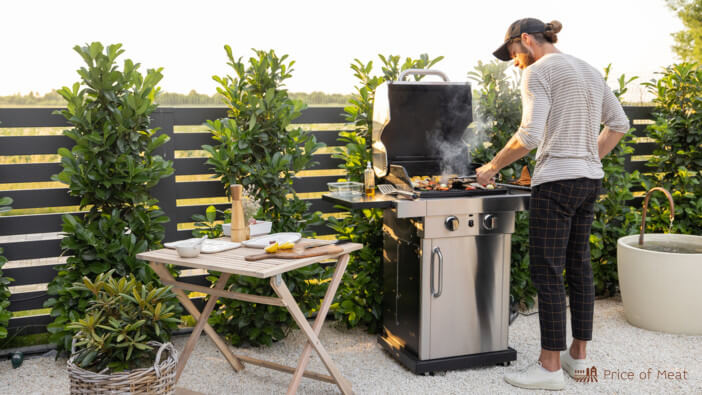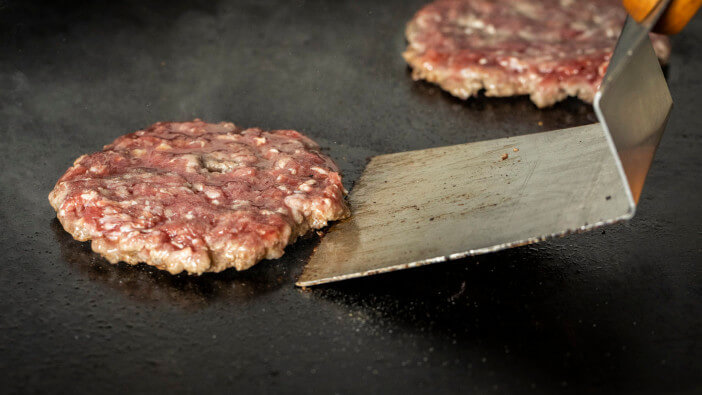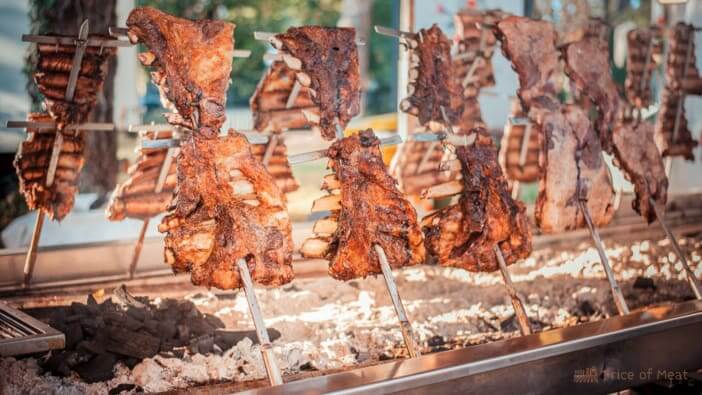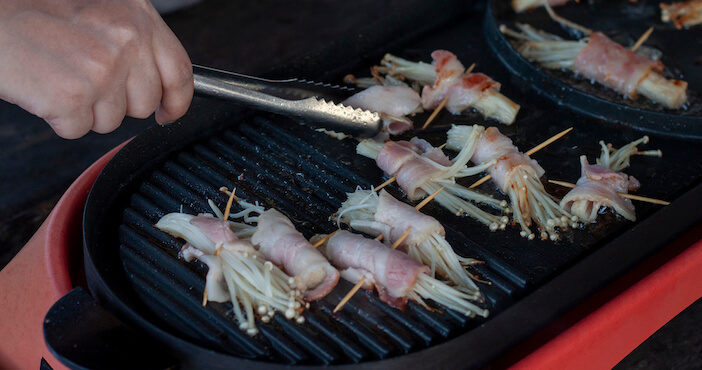Cast Iron or Stainless Steel: What’s Your Kitchen MVP?
In the culinary world, choosing between cast iron and stainless steel cookware is crucial. Cast iron excels in high-heat searing, baking, campfire cooking, and flavor enhancement. On the other hand, stainless steel offers versatility in cooking methods, precise heat control, everyday use, and non-reactive cooking with acidic ingredients. Understanding their differences helps optimize cooking performance and versatility in the kitchen.

In the culinary arena, the right cookware can transform your meals from decent to dazzling. Cast iron and stainless steel are two heavyweights, each with its perks and care routines. Whether you’re perfecting your omelet flip, achieving the ideal sear on scallops, or mastering a simmering sauce, knowing the ins and outs of these pans will help you decide which belongs in your kitchen lineup.
Disclosure: As an Amazon Associate, this site earns from qualifying purchases. Thank you!
Material Composition and Manufacturing

When choosing between cast iron and stainless steel cookware, it’s crucial to understand their material composition and how they’re made. These factors significantly impact their cooking performance, maintenance needs, and overall longevity in your kitchen.
Cast Iron
Cast iron cookware starts in a furnace, where iron and a small amount of carbon are melted together. This molten metal is poured into sand molds shaped like skillets, Dutch ovens, or specialty pans. After cooling, the cast iron is polished and often coated with vegetable oil for seasoning. Enameled cast iron gets an additional glass-like enamel coating, providing a non-stick finish and vibrant color.
Stainless Steel
Stainless steel cookware begins with sheets of stainless steel, a blend of iron, carbon, and at least 10.5% chromium for corrosion resistance. Additional elements like nickel and molybdenum enhance durability and temperature tolerance. These sheets are shaped into cookware through stamping, spinning, and deep drawing. High-end cookware often includes aluminum or copper cores for better heat conductivity, sandwiched between stainless steel layers. The final products are polished to a sleek, shiny finish.
Heat Conductivity and Retention

Navigating the heat in the kitchen is all about knowing your cookware choices. Let’s break down how cast iron and stainless steel stack up when it comes to heating your culinary game.
Cast Iron’s Ability to Hold Heat
Cast iron excels at heat retention, holding warmth long after leaving the stove. This makes it perfect for searing meat, providing sustained, intense heat for a great crust. Preheat your cast iron pan for about 10 minutes, rotating it for an even temperature. While it heats up slowly, it maintains consistent, high heat, ideal for recipes requiring steady temperatures. However, it takes longer to adjust to temperature changes, so patience is key.
Stainless Steel’s Even Heat Distribution
Stainless steel cookware excels in quick, even heat distribution, thanks to an aluminum or copper core. This makes it perfect for dishes requiring precise temperature control, like sautéing vegetables or preparing delicate sauces. High-quality stainless steel pans ensure even cooking without cold spots. However, they don’t retain heat as well as cast iron, making them less ideal for searing. Choosing between cast iron and stainless steel depends on your cooking needs: cast iron for sustained heat, and stainless steel for quick, even heating.
Cooking Performance and Versatility

In the culinary world, the battle between cast iron and stainless steel cookware is ongoing. Both boast unique features that can enhance your cooking in different ways. Let’s dive into when each type shines in the kitchen.
- For High-Heat Searing: Cast iron’s ability to withstand and maintain high temperatures makes it your go-to for creating that perfect sear on steaks or burgers. Its heat retention ensures even cooking, giving meats a delicious, crispy exterior.
- Baking Purposes: Thanks to its oven-safe quality, cast iron excels in baking. Whether you’re making cornbread, deep-dish pizza, or a skillet cookie, cast iron delivers consistent heat, contributing to an evenly baked outcome.
- Cooking Over Campfires: Its durability means cast iron can handle the direct heat of a campfire or grill, making it ideal for outdoor cooking adventures.
- Creating Flavorful Dishes: Over time, a well-seasoned cast iron skillet develops a non-stick surface and adds depth to your dishes. This flavor enhancement is perfect for recipes that benefit from a little extra culinary character.
- Versatile Cooking Methods: Whether you’re boiling, braising, sautéing, or frying, stainless steel’s unparalleled adaptability makes it suitable for nearly any cooking technique.
- Cooking With Acidic Ingredients: Stainless steel’s non-reactive nature allows you to cook acidic foods like tomatoes and vinegar-based sauces without worrying about altering the dish’s flavor or color.
- For Quick, Precise Cooking: Thanks to its ability to rapidly adjust to temperature changes, stainless steel is perfect when you need precise heat control for delicate sauces or chocolates.
- Everyday Cooking: For those who value simplicity and efficiency, stainless steel’s easy maintenance and durability make it an excellent choice for daily use in your kitchen.
Understanding both the strengths and limitations of cast iron and stainless steel cookware enables you to choose the best option for your cooking style and the dishes you love to prepare. Remember, having both types in your culinary arsenal allows you to maximize the cooking performance and versatility they offer.
Durability and Maintenance

When choosing between cast iron and stainless steel cookware, it’s crucial to consider not just how well they cook, but also their longevity and the effort required to maintain them. Let’s break down what you need to know.
Seasoning and Care for Cast Iron
Cast iron stands out for its rugged durability and ability to handle high heat, making it a staple for any serious cook. However, its maintenance routine is unique. Before you enjoy its non-stick benefits, you’ll need to season your pan. This process involves coating it with oil and heating it to create a natural, slick cooking surface that gets better with age. To maintain this seasoning:
- Avoid Soap: While it’s a myth that soap will ruin your seasoning, it’s best used sparingly. A quick rinse and scrub with hot water should do the trick for daily cleaning.
- Dry Immediately: Rust is cast iron’s archenemy. To keep it at bay, always dry your pan right after washing, either with a towel or by heating it on the stove.
- Regular Seasoning: Even with careful maintenance, your pan will occasionally need re-seasoning. Simply apply a thin oil layer and heat it in the oven to restore its sleek surface.
Cleaning and Upkeep for Stainless Steel
Stainless steel is less demanding when it comes to care. Its corrosion-resistant properties mean it does not rust, and there’s no seasoning layer to worry about. Here’s how to keep it in prime condition:
- Dishwasher Safe: Unlike cast iron, stainless steel can handle the dishwasher. However, to preserve its shine, hand washing is recommended when possible.
- Removing Stains: If your pan picks up water spots or food stains, a vinegar solution or a specialized stainless steel cleaner can bring back its shine.
- Scratch Prevention: Use softer cleaning tools like sponges instead of steel wool to avoid scratching the surface, keeping your cookware looking new for longer.
By understanding the care requirements of cast iron and stainless steel cookware, you can ensure your investment pays off with many years of delicious cooking. Remember, the key to longevity for any cookware is proper maintenance, so take the time to care for your pans based on their specific needs.
Non-Stick Properties and Cooking Surface

When you’re juggling between cast iron and stainless steel cookware, understanding their non-stick properties and cooking surfaces becomes crucial. Let’s dive into how seasoning cast iron transforms its surface and why mastering stainless steel cooking might require a bit more finesse.
Seasoning Cast Iron for a Non-Stick Surface
To achieve a non-stick surface on your cast iron cookware, seasoning is key. This involves coating the pan with oil and heating it to form a polymerized layer, preventing rust and enhancing non-stick properties. With regular use and maintenance, this layer improves over time, ideal for frying eggs or making pancakes. Effective seasoning and re-seasoning are crucial for maintaining cast iron’s non-stick quality.
Stainless Steel’s Learning Curve for Stick-Free Cooking
Stainless steel pans don’t rely on seasoning for non-stick cooking. Preheating before adding oil creates a temporary non-stick surface by thermal expansion, filling in pores and crevices. Mastering this technique enhances cooking with stainless steel, offering smoother sautés and sears. Stainless steel’s non-reactive nature makes it versatile for various dishes. Patience and practice are crucial for both cast iron seasoning and stainless steel technique, resulting in a rewarding cooking experience with fewer sticking issues and enhanced flavor.
Health and Safety Considerations
Choosing between cast iron and stainless steel cookware involves more than just cooking performance; it also impacts the health and safety of your meals.
- Iron Leaching in Cast Iron: Cast iron naturally leaches iron into food, potentially benefiting those with iron deficiencies. However, moderation is key to avoiding excessive iron intake, which can be harmful, especially for individuals with conditions like hemochromatosis.
- Reactivity and Safety in Stainless Steel: Stainless steel’s non-reactive nature preserves the taste and nutritional value of acidic foods. Made with iron, chromium, and nickel, it provides a safe cooking surface. For those with nickel allergies, nickel-free options are available. Overall, stainless steel is a safe, versatile choice for everyday cooking.
Price Comparison and Value for Money
When choosing between cast iron and stainless steel cookware, consider both initial cost and long-term value. Cast iron offers a lower upfront price and the potential for lifelong use, while stainless steel requires a higher initial investment but provides versatility and easier maintenance. Cast iron’s durability and health benefits make it cost-effective over time, while stainless steel’s versatility and convenience offer value for various cooking needs. Your decision should reflect your cooking habits, maintenance preferences, and priorities regarding longevity versus convenience.
Frequently Asked Questions
Is it better to cook on cast iron or stainless steel?
Cast iron is excellent for heat retention and high-heat cooking, while stainless steel is more versatile and suitable for a variety of dishes. The choice depends on one’s cooking needs and preferences.
What are the disadvantages of cast iron cookware?
Cast iron is notably heavier and requires more care initially than other materials. It needs seasoning to maintain its non-stick properties and prevent rust.
What is the healthiest cookware?
The safest cookware materials include stainless steel, ceramic, glass, and cast iron, as these do not leach harmful substances into food and are durable when properly maintained.
Why use cast iron instead of steel?
Cast iron offers superior compressive strength and excellent heat retention, making it ideal for certain types of cooking. It is also more cost-effective to produce and cast into cookware compared to steel.
What is healthier cast iron or stainless steel?
Both cast iron and stainless steel are considered safe and healthy for cooking. Cast iron can leach iron into food, which can be beneficial for some people. Stainless steel is non-reactive and does not leach any harmful substances.






